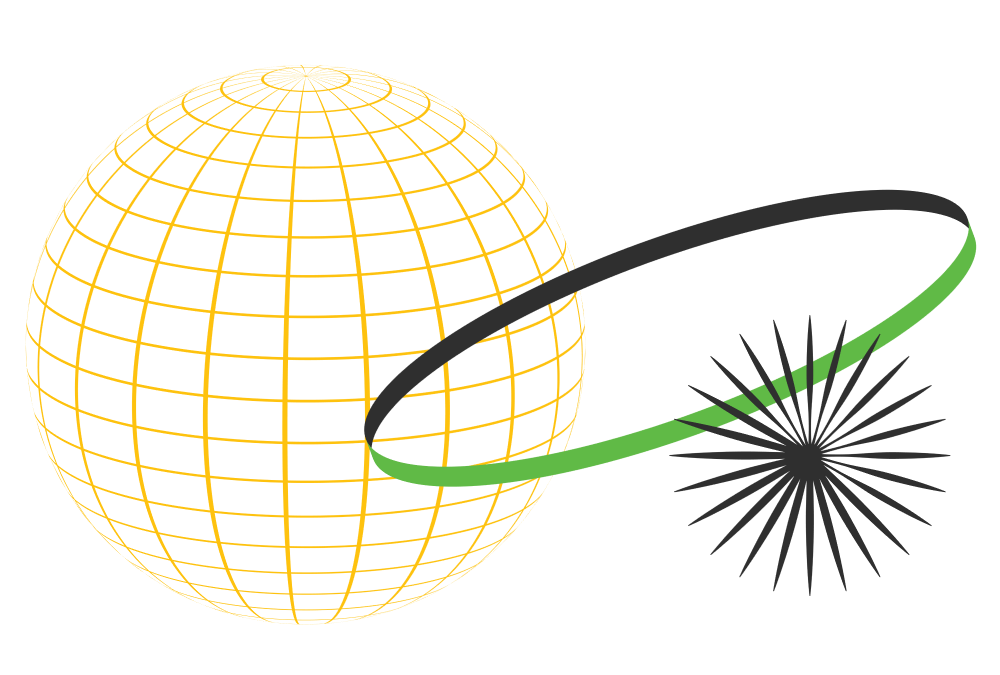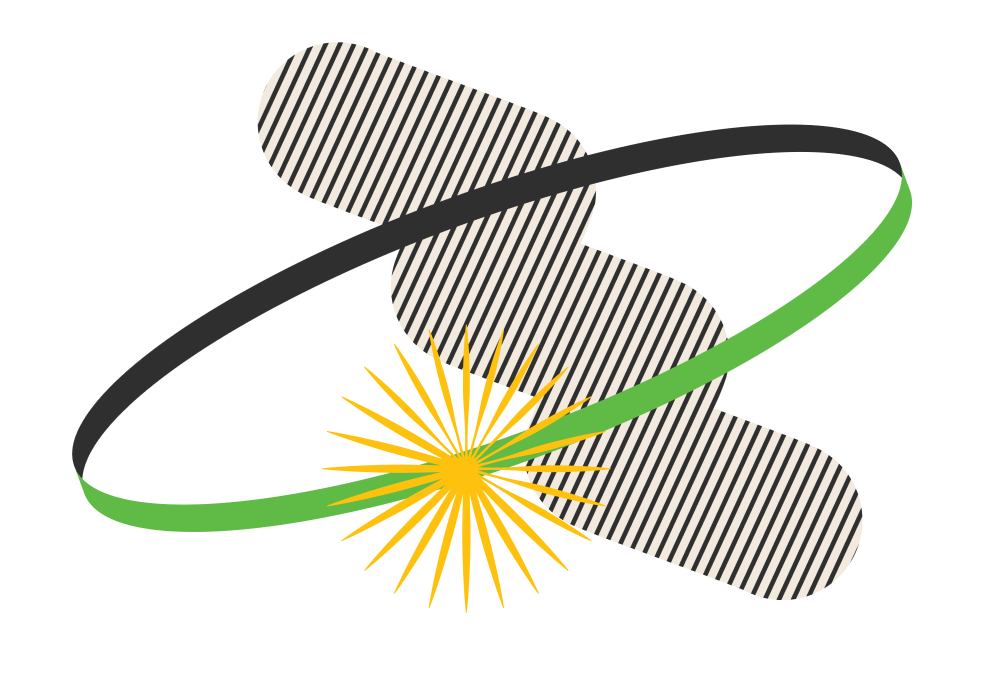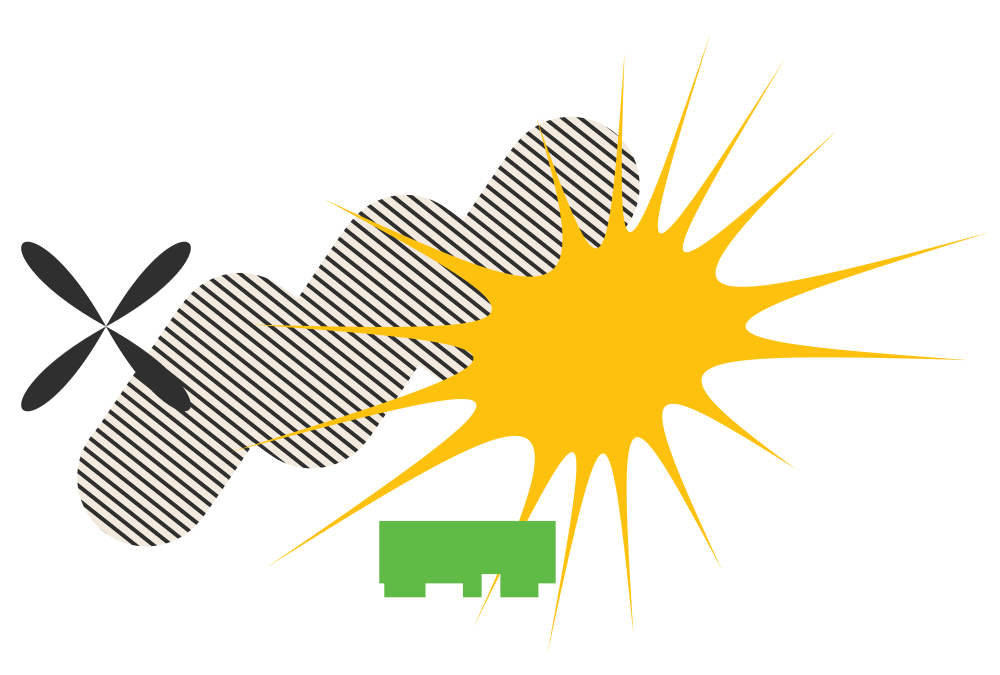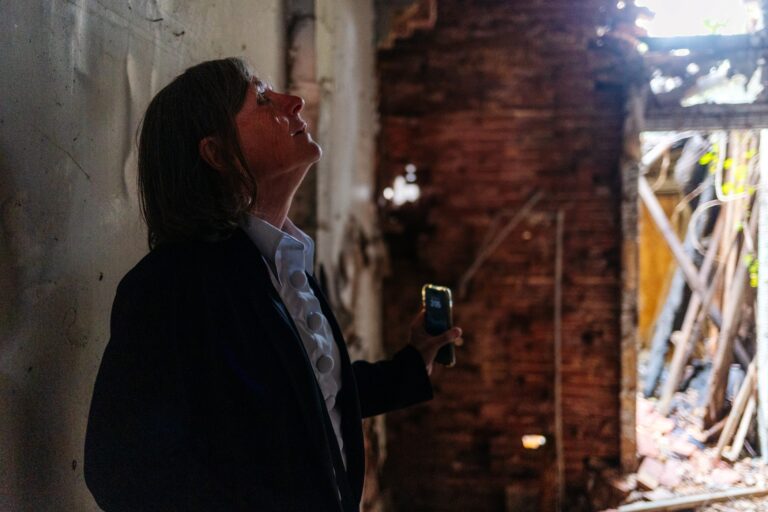Architect Kathleen Lechleiter ’81, ’82 is shaping safe, stable, and dignified housing in Baltimore neighborhoods.
Read MoreNDSU's Next Big Move
In 2021, NDSU earned recognition as one of the top research institutions in the country, but what does R1 status mean for the University's future?
Story by Micaela Gerhardt | Photo by Ann Arbor Miller | Illustrations by Leah Ecklund | August 31, 2022

Odalis Garcia ’26, a Ph.D. student in NDSU’s psychology program, grew up in New Caney, Texas, a small town about 20 miles from Houston. New Caney experiences an average annual rainfall of 56 inches — compared to Fargo’s average 24 inches — so when heavy rain began falling in August 2017, Odalis didn’t think much of it.
But the rain was relentless, and the winds picked up, reaching sustained speeds of 115 mph. Water crept toward the foundation of her family’s home. When it crested their front porch, Odalis’s parents, José and Elidia, told her and her two younger sisters to pack a bag with clothes. They spent a few nights at José’s co-worker’s house, keeping a close eye on the news for storm updates.
That storm — Hurricane Harvey — was recorded as the wettest tropical cyclone in U.S. history. When Odalis and her family were finally able to return home, they found it in shambles. The walls were dilapidated, stripped of sheetrock. Their belongings were soggy and strewn haphazardly across the floor. The damage was irreparable.
“I always trusted my parents — they were great for letting us know that everything was going to be OK, that we were going to find a way to get through things,” Odalis said. “But for my dad, seeing everything he’s ever worked for wash away … it was really hard on him.”
José often struggled to get a good night’s sleep, but after the hurricane, things got much, much worse. He was always tired. He spoke of a recurring nightmare in which everything flooded again. Odalis took notice — the storm had seeped into his subconscious.

TODAY, ODALIS RESEARCHES DREAMS as a graduate assistant in NDSU’s Personality and Trajectories to Health and Sleep (PATHS) Lab led by psychology professor Katherine Duggan. In the lab, Odalis is examining the relationship between stress, sleep, and nightmares. Is there a correlation between days with higher levels of stress and nightmare frequency or severity, she questions? How does parental death and divorce affect children’s sleep? Does discrimination factor in, or loneliness? She wants to find answers that might help her dad, and many others, find respite.
“From what I’m gathering in my own thoughts and observations so far, I think dreams could have a potentially good function, but that for some reason, like maybe after a certain amount of stress, they become maladaptive — these dreams are now disturbing,” Odalis said. “I hope to be able to pinpoint different factors that lead to that, and hopefully that can be addressed for people in clinical settings so they can finally have a good night’s sleep.”
At NDSU, research opportunities like Odalis’s are a foundational part of the student experience and a nationally recognized mark of excellence. In 2021, NDSU was one of only four universities in the six-state upper Midwest region to earn recognition from the Carnegie Commission on Higher Education as an R1 research institution, the highest achievable status for research universities in the U.S. Since 1970, Carnegie has been the leading classification system for recognizing research activity excellence in higher education.
“Our R1 status really means students are in research labs where they’re working with scholars who are well-known and well-regarded experts in their fields,” Colleen Fitzgerald, vice president for research and creative activity, said. “I think football gives us a good analogy — we want to play in that top-tier division. In research, we’re in that top tier.”
But sustained R1 status is not a guarantee. NDSU has gained — and lost — its status in the past. Carnegie reviews each university’s research status every three years, so R1 is a goal NDSU is constantly working to uphold. In considering its rankings, Carnegie analyzes the number of tenured and tenure-track faculty, post-doctoral and non-faculty research staff, and students awarded doctoral degrees each year.
“When you’re working on a problem that nobody knows the answer to, what are you going to do? It’s like walking in the dark. You don’t know whether your next step is correct or not — you have to rely on yourself.”
NDSU professor Mila Kryjevskaia
Carnegie also closely monitors research expenditures, or the amount of money universities spend on research in both STEM and non-STEM fields. Expenditures include grants and awards as well as philanthropic support designated for research. NDSU’s latest R1 ranking scored data from fiscal year 2020. During that year, NDSU’s research expenditures exceeded $155.6 million. Of that, $149.9 million was spent on STEM research, and nearly $5.8 million was spent on non-STEM-related research.
“To reach this top status, a university must excel at both research and graduate education in multiple disciplines, not just one area,” Susan Sell, dean of the College of Graduate and Interdisciplinary Studies, said. “At NDSU, we have 77 different areas of emphasis available for master-and/or doctoral-level training. This extraordinary depth and breadth provide a foundation for a diverse tapestry of research.”
In the Office of Research and Creative Activity, Colleen is working to identify gaps in NDSU’s resources and services so that the University can make its next big move.
“My vision for NDSU research includes doubling our research expenditures to around $300 million so we can move forward as a maturing R1 research university,” Colleen said. “For us to succeed and reach new heights in research, we’re going to need revenue and support from every source — our state legislators, federal partners, industry, and alumni and friends of the University.”
Susan, in the College of Graduate and Interdisciplinary Studies, sees a few areas for improvement: more first-year fellowships would recruit more graduate students, while more dissertation-year fellowships would help retain current students.
“Graduate students are the workforce of the research enterprise,” Susan said. “Without students, we wouldn’t be able to support the grants (and associated expenditures) required for R1 status. My vision for the future of graduate research at NDSU is to provide more funding and professional development for our students and to continue modeling for them what it looks like to be a successful researcher.”
ASSOCIATE PROFESSOR OF PHYSICS Mila Kryjevskaia, the James A. Meier Junior Professor in the College of Science and Mathematics, sees how students who conduct research gain enhanced critical thinking skills and more independence. Rather than being able to look up the answer to a difficult problem (like Googling the answer to a question in class), she explained, research forces students to seek out answers independently.
As a researcher herself, Mila seeks the most effective methods for teaching physics to better prepare her students for careers as future physicists and educators. She describes how the process of experimentation places researchers at the edge of the unknown, which leads them to new knowledge and solutions.

“It’s like walking in the dark. You don’t know whether your next step is correct or not — you have to rely on yourself,” Mila said. “You’re going to fail, but you will have to decide why you failed, or maybe you didn’t fail, and you have to determine what your results really mean. It’s a great learning experience to defend your thinking and stand your ground, or to change your mind when you think it’s appropriate and go back and get different results.”
Many undergraduate and graduate researchers in the physics department where Mila teaches have been supported with philanthropic funds as well as grants awarded by the National Science Foundation.
“Financial support is a great way for our students to feel valued, to be recognized, to feel accomplished,” Mila said. “It’s extremely important for moving forward, knowing that your work is valued.”
Colleen added, “As our students enter the workforce and bring the education, training, and expertise they’re getting here with them, it’s a return on the investment.”

FOR MILA AND MANY OTHERS, R1 status indicates that the University is a hub for innovation. It affirms that across disciplines, NDSU students, faculty, and staff are conducting trailblazing research to find new solutions to pressing issues at a local, regional, and global level — an environment that helps their work thrive.
“Being a part of the community where many other people identify as a teacher and researcher is important to me,” Mila said. “I mean, you feel it. You feel it when you come visit a department that is vibrant in research. You can see whiteboards in the hallway with diagrams and equations and people arguing about something. This is a sign of R1, this is a sign of an institution where people are passionate about discovering and promoting new knowledge.”
Studying in this nationally recognized research environment and receiving funding for conference participation and travel has been a motivating force for Odalis, who is just beginning her second year of graduate studies. Over the summer, Odalis traveled to Charlotte, North Carolina, to attend SLEEP 2022, a professional conference for sleep researchers, where she presented her research on “The role of parental absence and parental conflict on child and adolescent sleep.”
“I was very excited when I saw that we were recognized as R1 because to me that means there are more opportunities to be able to conduct research, to be able to dedicate energy to research and know that it’s being appreciated and valued at the school. That can lead to great things in the world in general,” Odalis said. “With my own research topic, I look to help people, and I know my cohort mates and other people in my program have some great research ideas that are going to improve the world.”
Building a community of ambitious thought-leaders in multiple disciplines will help NDSU maintain and enhance its position as a destination for research and higher education.
“Everybody wants to be with the best,” Colleen said. “I think we know when we’re in a group of people who are the cream of the crop, we do better. We bring our A-game when we’re working with people who have brought their A-game too. That’s the kind of experience we want to continue to offer.”

Share This Story
Related Stories
Structures of Connection
Joanna Slominski ’04 wants us to think differently about construction — it’s more than bricks and concrete.
Read More
